The Messiah: The One Who Brings Peace
When we lose a loved one, we recite the mourner’s Kaddish. Oddly enough, in this ancient Jewish prayer, we do not speak of death. Instead, our kavanah (intention) is directed toward God, praising Him and pleading with Him:
“May there be abundant peace from heaven, and life, for us and for all Israel; and say, Amen. He who creates peace in His celestial heights, may He create peace for us and for all Israel; and say, Amen.”
When grieving death, we pray for peace. Reflecting on its significance, our sages teach: “Great is peace, as all blessings are included in it” (Leviticus Rabbah 9:9). Longing for peace is a hope our people have held onto throughout history.
Ancient Jewish Messianic Expectation
When we were exiled from our ancestral homeland, Israel, and sent to Babylon, the prophet Ezekiel echoed the promise God made to David: to raise up Israel’s Messiah, the anointed one who would bring shalom:
“My servant David shall be king over them, and they shall all have one shepherd . . . . I will make a covenant of peace with them. It shall be an everlasting covenant with them” (Ezekiel 37:24–26).
Ezekiel witnessed the destruction of the Temple and suffered alongside our people in exile. In that moment of despair, he recorded the words of the Lord, a promise to raise up, “My servant David” (King Messiah) who would bring healing and wholeness to Israel.
Eventually, our people returned to the land of Israel and rebuilt the Temple, yet we continued to endure persecution while living under foreign domination, including Roman rule. During the Second Temple Period, many Jewish writings expressed varied expectations of the Messiah: some envisioned a king, others a priestly figure, a prophet, or even a divine being.
One stream of Jewish messianism appears in the biographies of Yeshua of Nazareth as preserved in the New Testament. Like other messianic claimants, Yeshua had a prophet announcing his coming: John the Immerser. John believed Yeshua was the Messiah sent to restore Israel. Yet, while imprisoned by King Herod, John began to doubt. He sent his disciples to ask Jesus, “Are you the one who is to come, or shall we look for another?” (Matt 11:3).
John, likely recalling Isaiah’s prophecy that the Messiah would “proclaim freedom for the captives” (Isaiah 61:1), found his situation difficult to reconcile with his expectations.
Yeshua replied:
“Go and tell John what you hear and see: the blind receive their sight and the lame walk, lepers are cleansed and the deaf hear, and the dead are raised up, and the poor have good news preached to them” (Matt 11:4–5).
Instead of providing a yes-or-no answer, Yeshua pointed to signs that reflected messianic hopes found in 4Q521, a scroll discovered among the Dead Sea Scrolls at Qumran:
[for the hea]vens and the earth will listen to his Messiah . . . And upon the poor his Spirit will hover, and the faithful ones he will renew by his strength . . . setting prisoners free, opening eyes of the blind, raising up [those who are] bo[wed down]. . . . the Lord will do glorious things that have never taken place, just as he s[aid], [for] he will heal the pierced ones, and the dead he will make alive; to the poor he will proclaim good news . . .1
The Jewish community that John likely came from anticipated the Messiah doing these unique miracles.2 Yeshua pointed to his miracles as evidence that he is “the one who is to come” (Matt 11:3).
Yeshua’s Messianic Miracles
Yeshua taught frequently in synagogues, and it was in these sacred spaces that he often healed people, enabling them to fully delight in Shabbat. Luke records one instance in which Yeshua healed a woman who was bent over and could not stand upright (Luke 13:12–13). When challenged for healing on Shabbat, Yeshua responded by calling her “a daughter of Abraham whom Satan bound for eighteen years” (Luke 13:16). This act becomes more than just a healing; it’s a sign of liberation, calling back to God’s faithfulness in delivering Israel out of Egypt:
“I am the Lord your God, who brought you out of the land of Egypt, that you should not be their slaves. And I have broken the bars of your yoke and made you walk erect” (Lev 26:12–13).
Throughout his ministry, Yeshua continued this liberating work: casting out demons, opening blind eyes, and even raising the dead, including raising a young girl and a close friend from the dead (Matt 9:18–26; John 11:1–44).
These deeds aligned not only with the prophetic vision of Isaiah but also with the messianic expectations reflected in 4Q521, demonstrating authority even over creation itself. When a storm overtook his disciples at sea, Yeshua calmed the wind and waves with a simple command:
“Peace! Be still!” (Mark 4:39)
According to the Gospel accounts, his resurrection was the ultimate sign of his messianic identity (Matt 12:40).
Luke records Peter’s Shavuot message, in which he makes this claim explicit:
“This Yeshua God raised up, and of that we all are witnesses. . . . Let all the house of Israel therefore know for certain that God has made him both Lord and Messiah.” (Acts 2:32–36a)
In rising from the dead, Yeshua offers peace to his people in a world still marked by brokenness. Yet this peace was not abstract or distant; it was a foretaste of the full redemption to come.
Yeshua’s earliest followers, who were faithful Jews, preserved his life and teachings in what came to be known as the New Testament. These writings remain part of Israel’s story and are worth exploring, even amid centuries of tension and misunderstanding.
Conclusion
As a Jewish follower of Yeshua myself, I have found his resurrection to be a fixed pole I hold onto through suffering. It doesn’t erase pain, but it reframes it. Knowing Yeshua allows me to experience “the peace of God, which surpasses all understanding” (Phil 4:7), as I await the full restoration to come.
Yeshua brought peace in the first century. He brings peace today. And one day, he will bring complete peace for all Israel and for all the world.
Footnotes
- 4Q521 frag. 2, col. 2, lines 1, 6, 8, 11, 12. Translation from Gregory R. Lanier, Corpus Christologicum: Texts and Translations for the Study of Jewish Messianism and Early Christology (Peabody: Hendrickson Academic, 2021), 244–45.
- For a case that John was a member of the Qumran community, see Joel Marcus, John the Baptist in History and Theology (Columbia, South Carolina: University of South Carolina Press, 2018), 27–45.
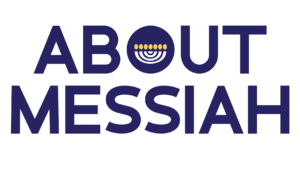

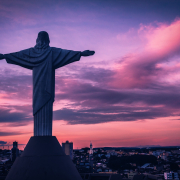

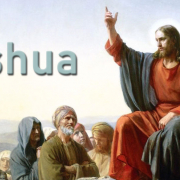
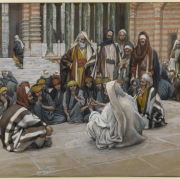 Public Domain
Public Domain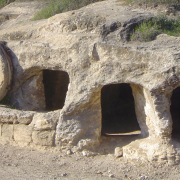 Brian Crawford
Brian Crawford
